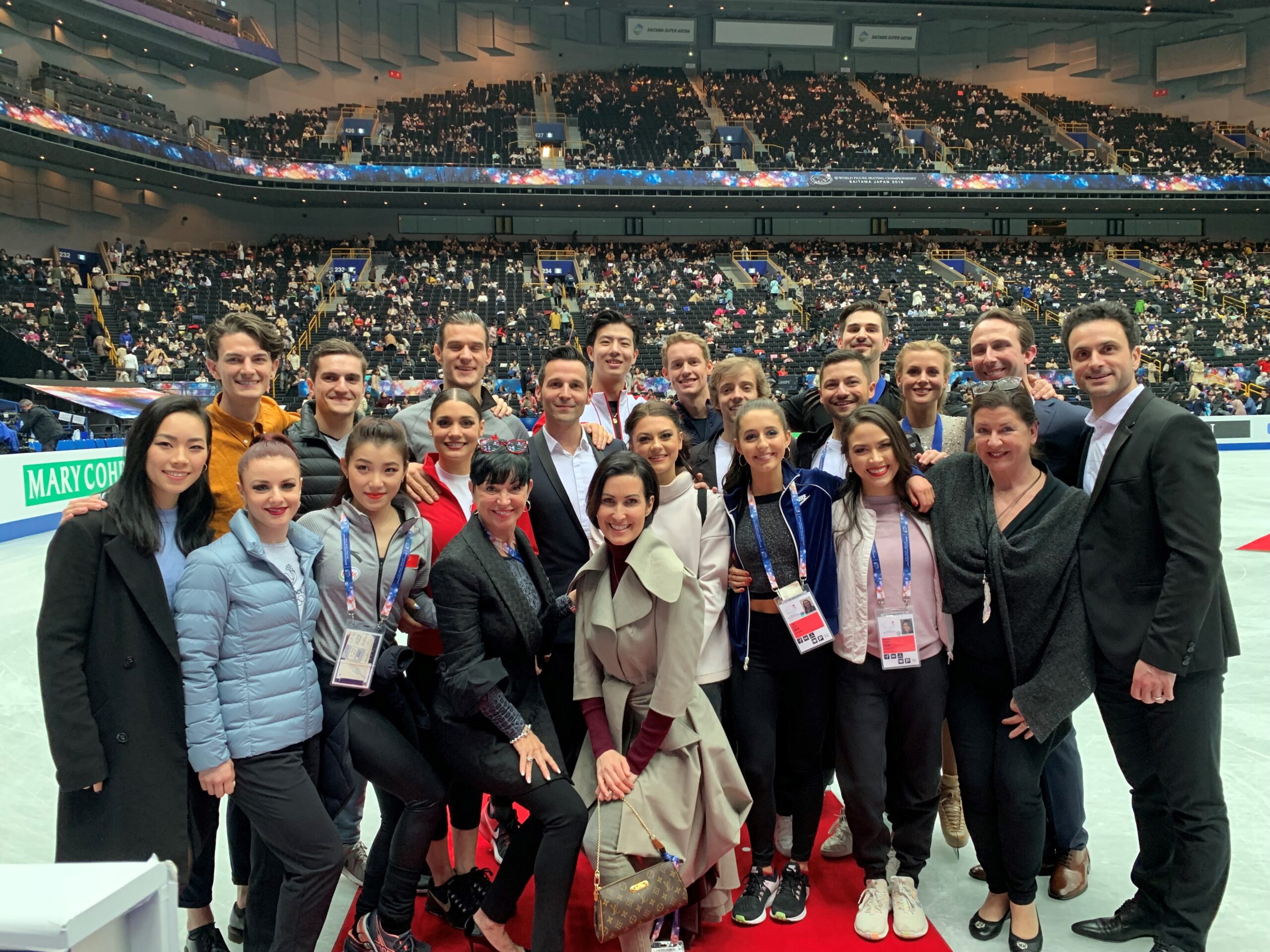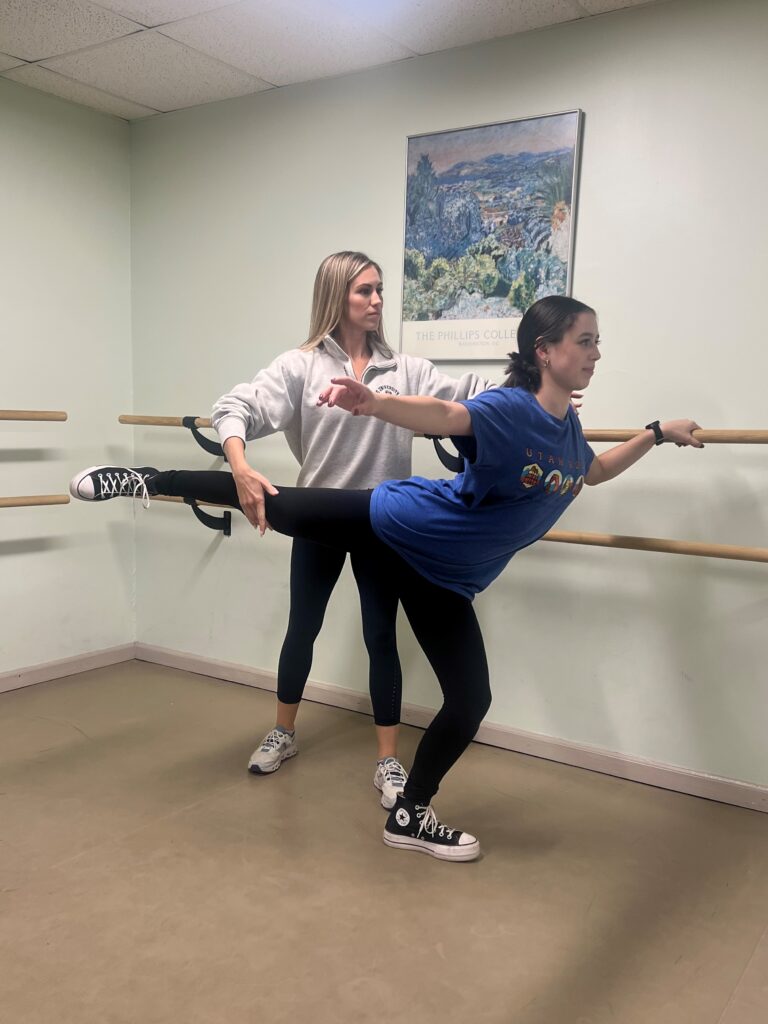
Dance and figure skating share many similarities—graceful port de bras, storytelling through movement, strength and balance—and working with skaters can be a perfect opportunity for dance teachers seeking additional employment beyond the studio. Whether you’re looking for a new challenge or want to be inspired to choreograph and teach differently, coaching skaters might be for you. “It’s kept me thinking of fresh ways to teach and train both dancers and skaters,” says Brooke Mainland, company artist with Eisenhower Dance Detroit, dance and Pilates instructor, and off-ice dance coordinator for Detroit Skating Club. In 2018, she was looking for teaching opportunities that were held earlier than the usual evening studio classes, and EDD artistic director Stephanie Pizzo recommended coaching skaters.
Before you think “I can’t work with figure skaters, I don’t know how to skate,” think again. Neither Mainland nor the other two dance coaches Dance Teacher spoke to were familiar with the world of figure skating when they began coaching top athletes. All you need is a willingness to learn, patience, and a collaborative mindset.
Getting Started
There are multiple disciplines within competitive figure skating: single or pairs figure skating, where jumps and throws are allowed; pairs ice dancing, which focuses more on the artistry rather than the show-stopping tricks; and group synchronized skating. All disciplines include sections of choreography, and many skating clubs look for dance instructors to help their athletes develop the lines, expression, and control needed to execute a competitive program.
A program, which can range from 2 minutes and 40 seconds to 4 minutes, must include a variety of jump, spin, and lift combinations—depending on the discipline of skating—along with a choreographic step sequence that utilizes the full rink.
Dance coaches are commonly asked to work with ice dancers, which is partially how Montreal-based Ginette Cournoyer got her start over three decades ago. She first began working with skaters because some of them (such as world champions Shae-Lynn Bourne and Victor Kraatz) came to her dance school asking for training. Later, Skate Canada reached out to Cournoyer, a former Canadian and North American ballroom dance champion, to work with their ice dancers on rhythm dance, which is the first program performed at ice dance competitions. Each year, the International Skating Union selects a different genre or theme of music and dance for the rhythm dance, such as the cha-cha or tango, and Cournoyer uses her dance expertise to help the skaters at the Ice Academy of Montreal adapt to new styles. After years of choreographing, she has worked with many Olympic and World ice-dance champions who come to the academy from France, China, Ukraine, and elsewhere.

Former commercial artist Jimmie Manners, who currently coaches at Ion International Training Center in Leesburg, Virginia, was also asked to work with skaters on the rhythm dance when the ISU announced in 2020 that the programs must include hip hop and street dance elements. “I didn’t even know ice dance existed,” says Manners, who at first ignored emails from Ion head coach Elena Novak because he was not an ice skater, but he eventually took on the challenge and joined the rink full-time. Manners found his background in roller skating helpful for understanding the lack of friction present on ice, which gave him a leg up when learning what was possible for the choreography section of programs.
And do not fear: Most dance coaches aren’t required to teach the technical elements of figure skating, such as jumps and spins. To make sure the skaters’ technique is pristine, many dance coaches partner with trained skating coaches to make sure the programs have a balance of skill and artistry. Sometimes, they may only work on sections of the program and another coach will connect the dots later on.
Off-Ice Dancing Training
Both Mainland and Manners teach the skaters off-ice dance classes at the rinks where they’re employed to help them develop proper technique in ballet, contemporary, jazz, or hip hop. To keep the skaters interested, Mainland emphasizes how the classes can improve their on-ice elements. For spirals—one-footed glides with the leg extended back—she focuses on developing strong arabesques at the barre. To break the habit of lifting the shoulders when jumping, she has them go across the floor doing chaînés or chassés en tournant. And she has them repeatedly practice landing a tour jeté with a turned-out and stable supporting leg so they can safely land jumps, like double Axels.

Mainland’s go-to exercise for skaters of all levels is “starting from fifth position, a tombé forward landing in an arabesque fondu, then a pas de bourrée after to switch sides.” This short combo helps focus on the stability of the supporting leg and activate the inner thighs in sous sous, which are commonly weak in skaters. The combo also helps keep the core engaged, so the skaters are not releasing their lower abs or sinking into their hip sockets.
When leading off-ice dance classes, Manners always includes coordination exercises with polyrhythmic tempos that are inspired by old-school jazz exercises. He’ll simulate traveling steps, like crossovers or stroking, while the skaters simultaneously flow through different port de bras, head, and leg positions. He then teaches combos to help them develop musicality, and right now it’s all about the 1980s, which the International Skating Union announced must be included in the rhythm dance next season. “We’re dancing to Prince and Michael Jackson and Madonna,” says Manners, who’s working on getting his skaters to emulate the vibe of that decade.
Mainland also uses her Pilates background to help skaters avoid one of the most common figure skating injuries: labral hip tears. “They have a lot of weakness in their lower abdominals, and whenever they land jumps, they sit forward in their hip sockets, which puts a lot of tension and repetitive grinding on the labra,” she says. Mainland incorporates Pilates equipment, bridges, and abdominal exercises to help the skaters strengthen weak muscle groups.
When not teaching technique, these coaches will help improve the choreographic elements in their programs. The process often begins off the ice, experimenting with the upper body or body positions if they are skating in pairs. “Once we get on the ice, it becomes more of a collaboration with the skater,” says Mainland, who will then work with them to see how the port de bras can be combined with turns or traveling steps

Teacher Takeaways
After years of coaching, and lots of experimentation, Mainland, Cournoyer, and Manners have learned how dance can be incorporated into skating. They know not to go in with fancy footwork, and not to expect quick direction changes. “If you want them to turn the opposing direction, it does not work the same way that it would on the floor,” says Cournoyer. Sometimes Manners would try to add steps that would be considered “illegal” in competition, but once he learned more from Novak, visiting judges, and the skating handbook, in addition to going through the certification process to become a U.S. Figure Skating coach, his choreography process became more streamlined.
Mainland’s best advice: “As much as you can, watch skaters on the ice. Watch them land their jumps and see the little changes that you can help them with.” Once she immersed herself in the world of skating, the better she was at helping them improve.





